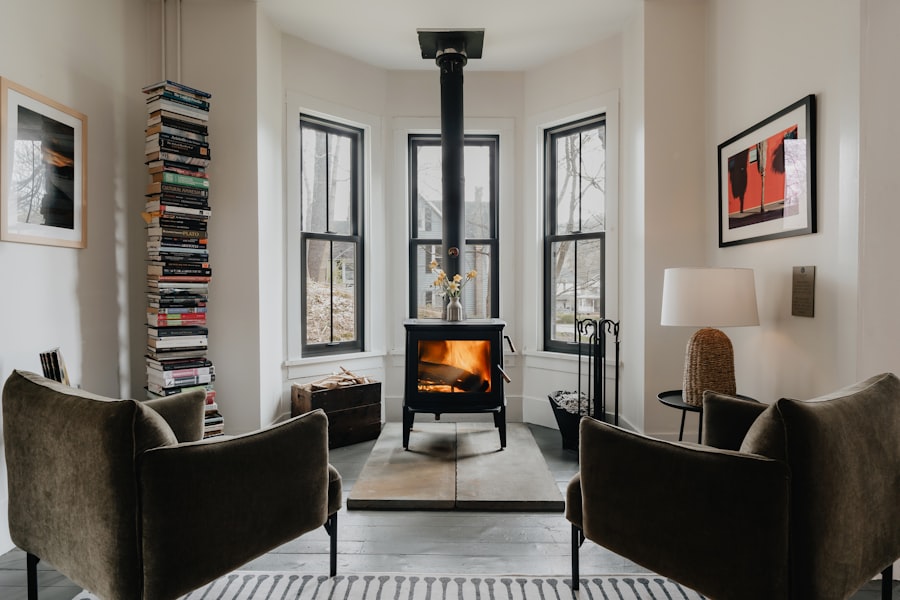Chickens require specific environmental conditions to maintain optimal health and well-being. Temperature is a crucial factor in their comfort and survival. The ideal temperature range for chickens is between 65-75°F (18-24°C), although they can tolerate temperatures from 40-85°F (4-29°C).
Extreme temperatures outside this range can negatively impact their health and productivity. Proper shelter is essential for chickens, as they need a dry and draft-free environment to prevent respiratory issues and other health problems. Adequate bedding material helps insulate the coop and absorb moisture, contributing to a comfortable living space.
During colder months, additional measures may be necessary to provide sufficient warmth for the flock. Understanding and meeting these environmental requirements is vital for chicken owners to ensure the welfare of their birds. By providing appropriate temperature control, shelter, and bedding, chickens can thrive and remain healthy in various climates and seasons.
Table of Contents
- 1 Providing proper shelter and bedding
- 2 Using heat lamps and heaters
- 3 Insulating the coop
- 4 Providing additional sources of warmth
- 5 Monitoring the temperature
- 6 Ensuring proper ventilation
- 7 FAQs
- 7.1 What are some ways to keep chickens warm in cold weather?
- 7.2 What temperature is too cold for chickens?
- 7.3 What should I feed my chickens to help keep them warm?
- 7.4 Are there any specific breeds of chickens that are better suited for cold weather?
- 7.5 What are the signs that my chickens are too cold?
Key Takeaways
- Understanding the needs of your chickens
- Chickens require a warm and dry environment to thrive
- They need protection from extreme temperatures and drafts
- Providing proper shelter and bedding
- A well-ventilated coop with dry bedding is essential for chickens
- Coops should be insulated and protected from wind and moisture
- Using heat lamps and heaters
- Heat lamps and heaters can be used to provide additional warmth in the coop
- They should be placed at a safe distance to prevent fires and burns
- Insulating the coop
- Insulation helps regulate the temperature inside the coop
- Proper insulation can help reduce heat loss and keep the coop warm
- Providing additional sources of warmth
- Chickens can benefit from additional sources of warmth such as heated perches or pads
- These can help keep chickens comfortable during cold weather
- Monitoring the temperature
- Regularly monitor the temperature inside the coop
- Use thermometers to ensure the temperature remains within a safe range
- Ensuring proper ventilation
- Proper ventilation is crucial for maintaining air quality and preventing moisture buildup
- Ventilation should be balanced to provide fresh air without creating drafts
Providing proper shelter and bedding
Insulation and Draft-Free Coop
The coop should be well-insulated and free from drafts to provide a cozy environment for the chickens. Additionally, providing ample bedding such as straw or wood shavings can help to keep the coop warm and dry.
Regular Bedding Maintenance
The bedding should be changed regularly to maintain cleanliness and prevent moisture buildup, which can lead to cold and damp conditions. The coop should also be spacious enough to accommodate all the chickens comfortably, with enough room for them to move around and huddle together for warmth.
Ventilation and Health
It’s important to ensure that the coop is well-ventilated to prevent the buildup of moisture and ammonia from chicken droppings, which can lead to respiratory issues.
By providing proper shelter and bedding, you can create a warm and comfortable environment for your chickens to thrive in.
Using heat lamps and heaters

In colder climates, heat lamps and heaters can be used to provide additional warmth for chickens during the winter months. Heat lamps can be hung in the coop to provide a source of heat, especially during the night when temperatures drop. It’s important to position the heat lamps at a safe distance from the chickens to prevent any accidents or injuries.
Additionally, using heaters specifically designed for chicken coops can help to maintain a consistent temperature and keep the chickens warm and comfortable. When using heat lamps and heaters, it’s crucial to follow safety precautions to prevent fires or other hazards. Ensure that the electrical cords are secured and out of reach of the chickens, and regularly check for any signs of wear or damage.
It’s also important to monitor the temperature in the coop to ensure that it remains within the optimal range for the chickens’ comfort. By using heat lamps and heaters responsibly, you can provide your chickens with the additional warmth they need during colder months.
Insulating the coop
Insulating the coop is an effective way to retain heat and keep the chickens warm during the winter months. Proper insulation can help to maintain a consistent temperature inside the coop, reducing the need for additional heat sources. Insulation materials such as foam board or fiberglass can be used to line the walls and ceiling of the coop, creating a barrier against cold temperatures and drafts.
In addition to insulating the walls and ceiling, it’s important to insulate the windows and doors of the coop to prevent heat loss. Weather-stripping can be used to seal any gaps or cracks around windows and doors, ensuring that cold air stays out and warm air stays in. By insulating the coop, you can create a cozy and comfortable environment for your chickens to stay warm during the winter months.
Providing additional sources of warmth
In addition to heat lamps and heaters, there are other ways to provide additional sources of warmth for chickens during colder months. One effective method is to use heated waterers to prevent water from freezing, ensuring that the chickens have access to fresh water at all times. Keeping the water at a consistent temperature can help to keep the chickens hydrated and maintain their body temperature.
Another way to provide additional warmth is by using heated perches, which can help to keep the chickens’ feet warm during cold nights. Heated perches are designed to provide a gentle source of warmth, helping to prevent frostbite and keep the chickens comfortable while roosting. By providing these additional sources of warmth, you can ensure that your chickens stay cozy and healthy during the winter months.
Monitoring the temperature

Temperature Checks
Monitoring the temperature in the coop is essential for ensuring that the chickens are comfortable and safe. Using a thermometer, you can regularly check the temperature inside the coop to ensure that it remains within the optimal range for the chickens’ well-being. It’s important to place the thermometer at chicken level to accurately gauge the temperature where they are roosting.
Observing Chicken Behavior
In addition to using a thermometer, you can also observe the behavior of the chickens to gauge their comfort level. If they are huddling together or showing signs of distress, it may indicate that they are too cold and require additional warmth. Conversely, if they are panting or seeking shade, it may indicate that they are too hot and need better ventilation.
Making Adjustments
By monitoring the temperature in the coop and observing the behavior of the chickens, you can make adjustments as needed to ensure their comfort and well-being.
Ensuring proper ventilation
Proper ventilation is crucial for maintaining a healthy environment inside the chicken coop, especially when using heat lamps and heaters. Good ventilation helps to remove excess moisture, ammonia, and airborne pathogens from the coop, creating a clean and comfortable environment for the chickens. It also helps to regulate the temperature inside the coop, preventing it from becoming too hot or too cold.
To ensure proper ventilation, it’s important to provide adequate airflow without creating drafts that could make the chickens uncomfortable. This can be achieved by installing vents or windows that can be opened or closed as needed to control airflow. It’s also important to regularly clean and maintain the ventilation system to prevent blockages or obstructions that could impede airflow.
By ensuring proper ventilation in the coop, you can create a healthy and comfortable environment for your chickens year-round. In conclusion, understanding the needs of your chickens in terms of warmth is essential for ensuring their health and well-being. By providing proper shelter and bedding, using heat lamps and heaters responsibly, insulating the coop, providing additional sources of warmth, monitoring the temperature, and ensuring proper ventilation, you can create a warm and comfortable environment for your chickens to thrive in.
Taking these measures will not only keep your chickens happy and healthy but also ensure that they are able to withstand colder temperatures during winter months.
If you’re looking for more information on keeping your chickens warm during the winter months, you might want to check out this article on The Chicken Coop Country Diner. It offers tips and advice on how to create a cozy and comfortable environment for your feathered friends, ensuring they stay warm and healthy during the colder seasons.
FAQs
What are some ways to keep chickens warm in cold weather?
Some ways to keep chickens warm in cold weather include providing a well-insulated coop, using heat lamps or heated pads, and ensuring good ventilation while avoiding drafts.
What temperature is too cold for chickens?
Chickens can tolerate cold temperatures, but they are susceptible to frostbite and other cold-related health issues when temperatures drop below freezing. It’s important to provide them with a warm and dry environment when temperatures are extremely low.
What should I feed my chickens to help keep them warm?
Feeding chickens a diet high in protein and fat can help them generate body heat to stay warm in cold weather. Additionally, providing warm water and supplemental treats like cracked corn can also help keep them warm.
Are there any specific breeds of chickens that are better suited for cold weather?
Some chicken breeds, such as the Rhode Island Red, Plymouth Rock, and Orpington, are known for their cold-hardiness and are better suited for colder climates. These breeds have thicker feathers and are more adept at regulating their body temperature in cold weather.
What are the signs that my chickens are too cold?
Signs that your chickens are too cold include huddling together for warmth, shivering, reduced egg production, and pale combs and wattles. It’s important to monitor your chickens for these signs and take steps to keep them warm if necessary.
Meet Walter, the feathered-friend fanatic of Florida! Nestled in the sunshine state, Walter struts through life with his feathered companions, clucking his way to happiness. With a coop that’s fancier than a five-star hotel, he’s the Don Juan of the chicken world. When he’s not teaching his hens to do the cha-cha, you’ll find him in a heated debate with his prized rooster, Sir Clucks-a-Lot. Walter’s poultry passion is no yolk; he’s the sunny-side-up guy you never knew you needed in your flock of friends!







